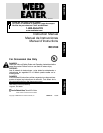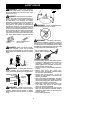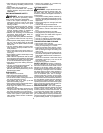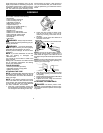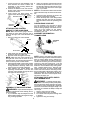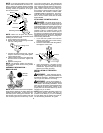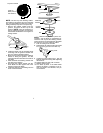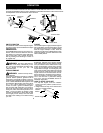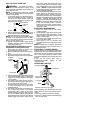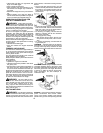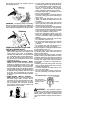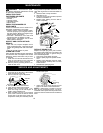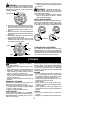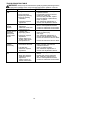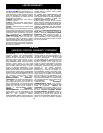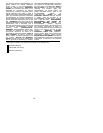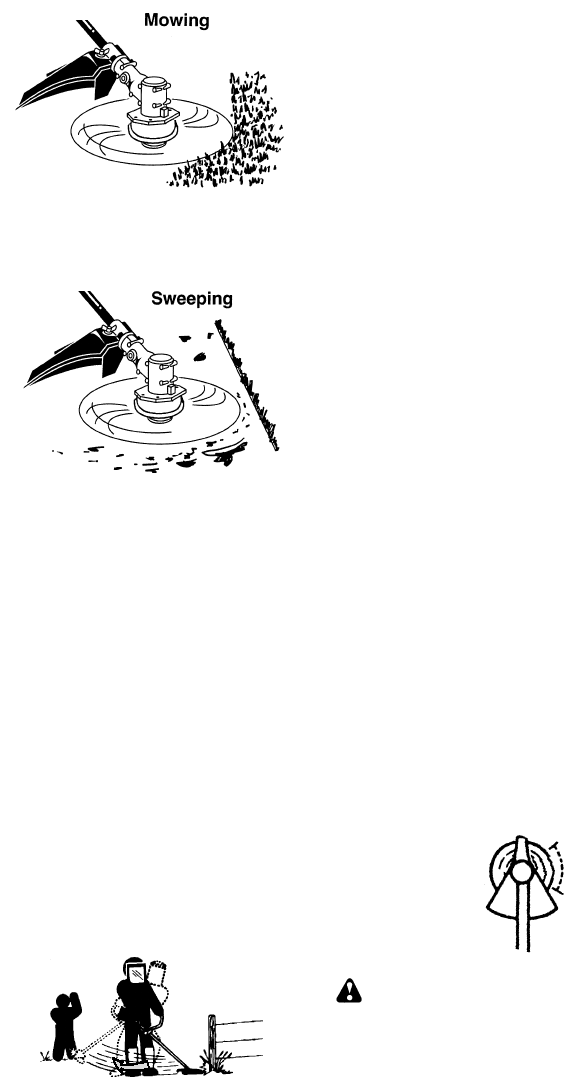
11
into the ground as this c an scalp the ground
and damage the tool.
SWEEPIN G
-- The fanning action of the r otating
line can be used toblow aw ayloose debrisfrom
an area. Keep the line parallel to and above the
areasur faceandsw ingthetoolfromsidetoside.
OPERATING INSTRUCTIONS FOR
USE WITH BRUSH BLADE
S
Blade Thrust
is a reaction that only occurs
when using a bladed unit. This reaction can
cause serious injury such as amputation.
Carefully study this section. It is impor tantthat
you understand what causes blade thrust,
how you can reduce the chance of i ts occur-
ring, and howyou canremain incontrol ofunit
if bl ade thrust occurs.
S
WHA T CAUSES BLADE THRUST -- Blade
Thrust
can occur w hen the spinning blade
contacts an object that it does not cut. This
contact causesthe blade to stopfor aninstant
andthensuddenly m oveor“thrust”awayfrom
the objectthat washit. The“thrusting”reaction
canbe violentenoughto causetheoperatorto
be propelled in any direction and lose control
of the unit. The uncontrolled unit can cause
seriousinjuryifthebladecontactstheoper ator
or others.
S
WHEN BLADE THRUST O CCURS --
Blade Thrust
can occur without warning if
the blade snags, stalls, or binds. This is
more likely to occur in areas where it is diffi-
cult to see the material being cut. By using
the unit properly, the oc currence of blade
thrust will be reduced and the operator will
be less likely to lose control.
S
Cut onlygrass, weeds, and woody brush up
to 2inches indiameter with the brush blade.
Do not let the blade contact material it can-
not cut such as stumps, rocks, fences,
metal, etc., orclusters of hard, woody brush
having a diameter greater than 2 inches.
S
Keep the blade sharp. A dull blade is more
likely to snag and thrust.
S
Cut only at full throttle. The blade will have
maximum cutting powerand is less likely to
bind or stall.
S
“Feed” the blade deliberately and not too
rapidly. The blade can thrust away if it is fed
too rapidly.
S
Cut only from your left to your right. Cutting
on the r ight side of the shield will throw de-
bris away from the operator.
S
Use the shoulder s trap and keep a firm grip
on the unit with both hands. A properly ad-
justed shoulder strap will support the weight
of the unit, f reeing your arms and hands to
control and guide the cutting motion.
S
Keep feet comfortably spread apart and
braced for a possible sudden, rapid thrust of
unit. Do not overreach. K eep firm footing and
balance.
S
Keep blade below waist level; it will beeas-
ier to maintain control of unit.
S
Do notraise the engine above your waist as
the blade can come dangerous ly close to
your body.
S
Do not sw ing unit with such force that you
are in danger of losing your balance.
Bring theengine to cutting speed before enter-
ing the material to be cut.
If the blade does not turn when you squeeze
the throttle trigger, make sure t ube is fully in-
serted into the engine.
Always release the throttle trigger and allow
engine toreturn toidle speedwhen notcutting.
The blade should not turn while the engine is
running at idle. If the blade turns at idle, do not
use your unit. Refer t o the Carburetor adjust-
ment section or contact your authorized ser-
vice dealer.
S
Maintain good firm footing while using the
unit. Do this by planting feet firmly in a com-
fortable apart position.
S
Cut while swinging the upper part o f your
body from left to right.
S
Asyoumoveforward to the nextarea to cut,
be sure to maintain your balance and foot-
ing.
Cut using t he 2
o’clock t o 4 o’clock
position of the
blade
2 o’clock
4 o’clock
RECOMMENDED CUTTING POSITION
WARNING:
The operator or others
must not tryto clearaway cut material withthe
engine running or the blade turning to avoid
serious injury. Stop engine and blade before
removing materials wrapped around blade or
tube.



